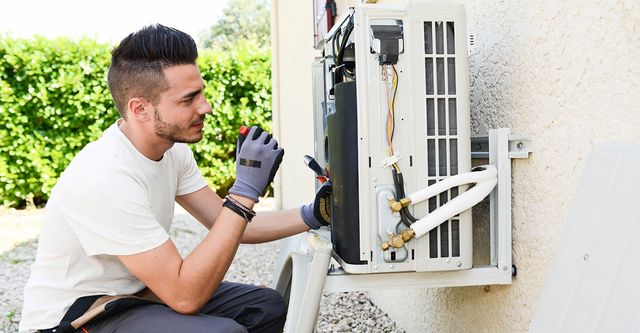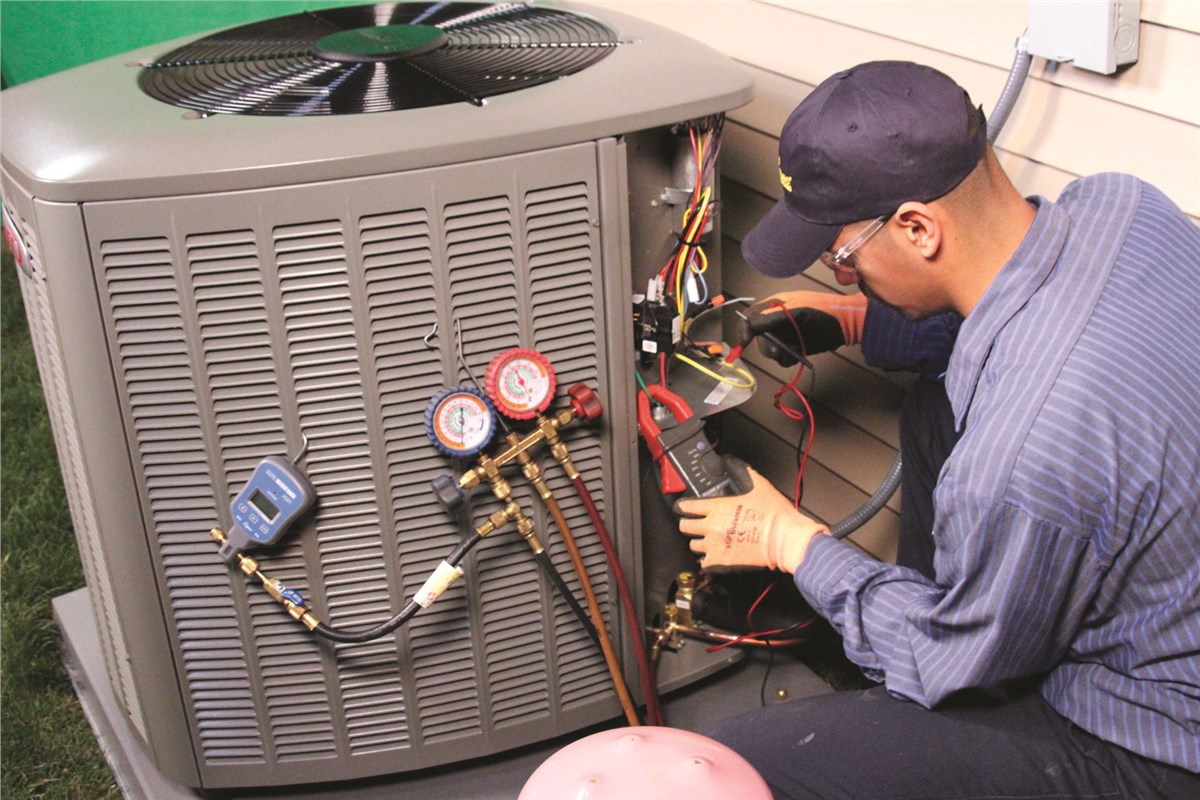Have you ever before asked yourself why air conditioning installation in skyscrapers offers distinct challenges?
The complexity goes beyond just cooling down the rooms efficiently. From maneuvering minimal area restraints to resolving upright distribution difficulties, each aspect needs thorough planning.
But what concerning the structural factors to consider and making certain accessibility to electric power for these systems?
These are just a couple of items of the challenge that make taking on a/c installation in skyscrapers a complex endeavor.
Secret Takeaways

- Strategic equipment positioning and noise control are vital in high-rise air conditioning installments.
- Efficient ductwork routing and maintenance accessibility make certain optimal a/c efficiency.
- Security, weight circulation, and adherence to building codes are essential for architectural stability.
- Power performance, access, and seamless integration boost air conditioner system capability in high-rise buildings.
Space Constraints
When installing air conditioning in high-rise buildings, you may experience space restraints that call for mindful planning and cutting-edge remedies. Limited access to specific locations can present a challenge during installment. To tackle this, specific tools and creative maneuvering may be required to browse via tight rooms and get to the marked locations for mounting the air conditioning systems.
Additionally, in skyscrapers, noise control is crucial to guarantee the comfort and wellness of occupants. The restricted rooms and distance of residential units in these structures enhance the influence of sound produced by a/c systems. Applying soundproofing actions, using quieter tools, and tactical placement of components can assist minimize noise interruptions for homeowners.
Vertical Distribution Difficulties
Discovering the intricacies of high-rise buildings, particularly with regards to vertical circulation, presents one-of-a-kind obstacles for cooling installment. Ductwork difficulties are prominent in skyscraper structures, where routing air ducts vertically with multiple floors can be elaborate. Setup logistics become necessary, as coordinating the positioning of ductwork and tools in a way that guarantees effective airflow and temperature control throughout the building is paramount.
Upkeep gain access to is an additional substantial issue when it involves upright distribution in high-rise buildings. Guaranteeing that heating and cooling systems are quickly accessible for normal maintenance and repair work is crucial for lasting capability. In addition, the logistics of equipment transport to higher floorings present a challenge. Relocating heavy cooling devices, ductwork parts, and various other products up vertical ranges needs cautious planning and coordination to assure safety and performance.
Structural Considerations
Taking into consideration the architectural integrity of skyscrapers is necessary when intending a/c installations. air conditioner near me Skyscrapers are created to support details weights, and adding cooling systems can impact the total weight circulation. It's important to follow constructing codes to ensure that the added weight from the HVAC systems does not endanger the structure's structural stability. Building regulations describe the optimum allowed lots for different areas of the structure, consisting of floorings and wall surfaces, to prevent overloading.
Proper weight circulation is necessary to stop uneven tension on the structure's framework, which can bring about architectural issues with time. Cooling and heating systems must be tactically put to distribute their weight evenly and lessen any type of potential stress on particular areas. Engineers should meticulously assess the building's load-bearing ability and design the air conditioning installation appropriately to make sure that it meets security requirements and governing requirements.
Electrical Power Availability
To validate the successful installation of air conditioning systems in skyscrapers, assessing the access of electric power is paramount.
When assessing the electric power accessibility for air conditioning in skyscrapers, consider the following:
- Distance to Source Of Power: Ensure that the air conditioning systems are located near source of power to lessen power loss and warranty efficient operation.
- Remote Control Capability: Opt for systems that provide push-button control features, permitting hassle-free monitoring and adjustment of the air conditioning units from a range.
- Power Efficiency Scores: Focus on air conditioning devices with high energy performance scores to minimize general power consumption and reduced operational expenses.
- Backup Power Solutions: Implement back-up power solutions like generators or battery backups to ensure continuous procedure of the cooling systems throughout power interruptions.
HVAC System Assimilation

When incorporating heating and cooling systems into skyscrapers, coordinate flawlessly with existing infrastructure for peak performance. Guarantee system compatibility by extensively reviewing the structure's layout and existing HVAC configuration. Throughout the installation process, prioritize reliable combination to maximize the total efficiency of the a/c system.
To accomplish effective a/c system integration, collaborate very closely with designers, designers, and service providers to resolve any type of potential difficulties. Conduct a detailed analysis of the building's ventilation, ductwork, and control systems to make sure smooth compatibility with the new HVAC tools. This aggressive technique can help avoid pricey rework and delays throughout the installment stage.
Integrating a/c systems in skyscrapers requires thorough planning and precise implementation to ensure peak performance. Carrying out innovative innovation and energy-efficient elements can better boost system performance and sustainability. By focusing on smooth integration and system compatibility, you can develop a comfy interior setting while making the most of energy efficiency in skyscraper frameworks.
Frequently Asked Concerns
Exist Any Kind Of Specific Laws or Codes That High-Rise Buildings Must Comply With When Installing Cooling Equipments?
When setting up cooling systems in skyscrapers, laws and safety compliance are vital. Particular codes determine just how these systems should be installed to guarantee the security of owners. Conformity with these policies is vital for the correct functioning of the air conditioning systems and to stop prospective threats.
It is essential to follow these guidelines carefully to ensure a safe and reliable cooling system within the building.
What Are Some Typical Solutions for Sound Control in A/c Systems in High-Rise Buildings?
To minimize sound in air conditioning systems in skyscrapers, take into consideration soundproofing products and strategic placement to wet vibrations. Opt for energy-efficient designs with quieter operation.
Regular upkeep checks and timely repair work can stop loud malfunctions. Additionally, utilizing variable rate modern technology can minimize sound levels throughout low-demand periods.
Just How Do Extreme Weather, Such as High Winds or Lightning Strikes, Affect the Setup and Operation of A/c Solutions in Skyscraper?
Severe weather like high winds or lightning strikes can significantly influence the installation and operation of cooling systems in high-rise buildings. These climate components can position structural challenges, influencing the stability and efficiency of the systems.
When facing such conditions, it's important to think about the resilience of the structure's infrastructure and the toughness of the cooling and heating parts to guarantee perfect working and safety.

Exist Any Special Factors To Consider for Integrating Smart or Energy-Efficient Technologies Into A/c Systems in Skyscraper?
When taking into consideration integrating clever or energy-efficient technologies into cooling systems in skyscrapers, there are some special considerations to bear in mind. Assimilation challenges might arise when connecting different systems, and adapting these modern technologies to work successfully in a vertical environment can be difficult.
Nonetheless, energy-saving innovations offer terrific possible for minimizing costs and environmental effect. It's important to meticulously plan and implement these remedies to maximize their advantages.
What Are the Upkeep Needs for Air Conditioning Equipments in Skyscraper, and Exactly How Frequently Should They Be Serviced?

To maintain your a/c systems in skyscrapers running smoothly, regular maintenance is crucial.
Maintenance frequency depends upon elements like use and system complexity. Typically, it's advised to have your AC systems examined a minimum of annually by an expert technician.
This routine maintenance not only guarantees leading efficiency yet also helps in preserving power efficiency, saving you cash in the future.
Verdict
In general, installing air conditioning in skyscrapers presents distinct challenges due to space restrictions, upright distribution obstacles, architectural considerations, electric power ease of access, and HVAC system integration.
It calls for cautious planning and coordination to make certain the system works effectively and successfully in such intricate environments.
By dealing with these challenges head-on and collaborating with knowledgeable experts, structure proprietors can guarantee that their passengers remain comfortable and trendy also in the tallest of structures.
